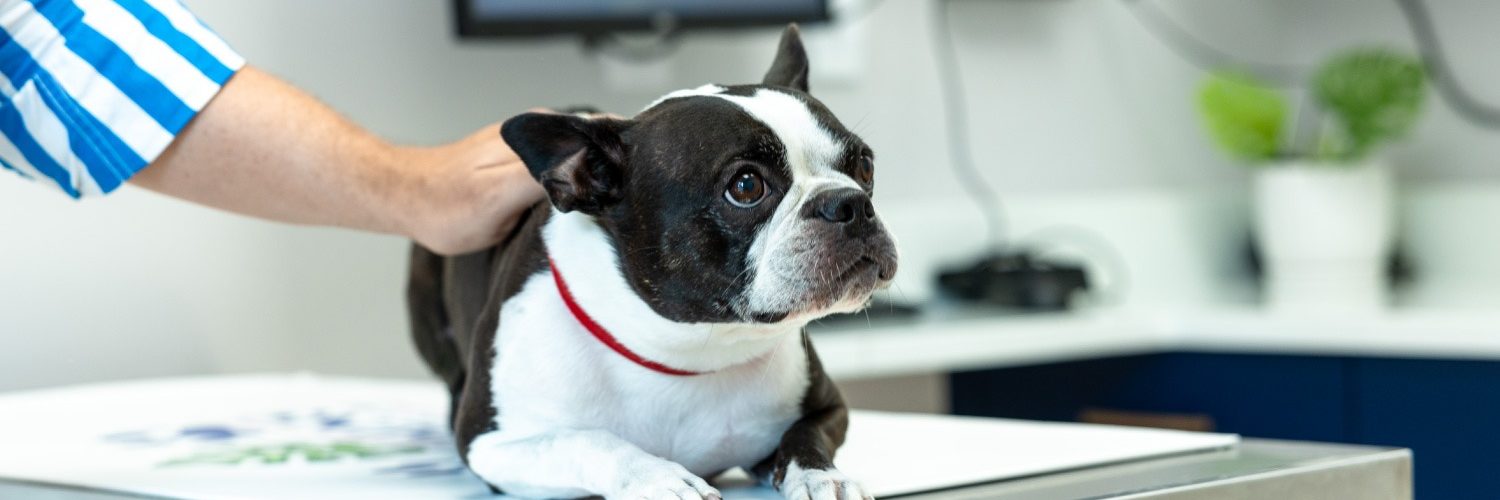Thunderstorm phobia, also called fear of thunderstorms or storm phobia, is a common issue in dogs. The body’s response to fearful stimuli, such as loud thunder, is a normal way of protecting itself. However, the unnecessary stress on your pet for such common and natural occurrences can lead to a lot of problems. We also present several ways to manage this phobia.
Signs of Thunderstorm Phobia in Dogs
Common signs of thunderstorm phobia include:
- hiding
- shaking
- crying or whining
- excessive licking
- urinating or defecating in the house
- pacing
- panting
- drooling
- restlessness
- trying to escape into or out of the house/pen
- looking to an owner for comfort by pawing the owner, nuzzling, or whimpering
Why are some dogs afraid of thunderstorms?
Thunderstorm fear and anxiety can occur for many reasons and at any age. We may never fully understand why it happens. Some dogs are just more prone to thunderstorm phobia or react more strongly to storms than others.
Genetics, traumatic experiences, and/or poor socialization or acclimation to storms and loud noises as a puppy could be contributing factors. For example, herding breeds tend to experience storm phobia more often than certain other breeds.
Some researchers have found that female dogs are more likely to have it than males. Dogs who are partially deaf or only deaf in one ear cannot tell where the storm sounds are coming from, and may react in a more extreme manner than dogs who can hear.
Dogs with separation anxiety are much more likely to develop storm phobia. Genetically, certain hunting dogs may respond more intensely to thunder because it may be difficult for them to differentiate storm sounds from gunshot sounds.
How to manage thunderstorm phobia
Helping your dog deal with storm phobia effectively requires multiple methods of treatment. Always discuss your concerns with your veterinarian first so that they can help you make a plan specific to your pet. Some common ways to treat storm phobia include:
- Minimize the stimuli from a storm by limiting your dog’s exposure to it. This includes closing the blinds so your pet cannot see lightning; keeping your pet in an interior room so thunder and rain are muffled; and playing white noise, such as boxed fan, or soothing music (e.g. classical music) during a storm. A crate covered with a blanket may help. It is important to monitor your pet if a crate is used to ensure he does not become more anxious while in the crate. Some dogs may feel trapped in such an environment. If your pet has a specific place he likes to hide during storms, you may want to continue to let him use this area instead of creating a new space for him.
- It is ok to offer comfort to your pet when they are anxious, but remember to remain calm during your interactions. If you seem anxious, even if it is because you are worried about how your pet will react to the storm, your pet may pick up on your anxiety and become even more anxious and fearful.
- Playing with your pet as a distraction can be helpful. This can give your pet an outlet for some of that nervous energy he has built up, and a way to use it productively as opposed to destructively.
- Give your pet a chew toy or a treat-dispensing toy with food inside, such as peanut butter, or a food puzzle toy to distract him during the storm. Chewing is a proven stress reliever in dogs.
- Body wraps may help keep your pet relaxed. Some can decrease the sights from a storm, such as wind and lightning. Headphones or ear muffs for dogs can decrease storm noises.
- Your veterinarian can prescribe medication or a supplement for your pet’s storm phobia. The medication can reduce the level of fear and anxiety your pet has. Consult with your Veterinarian to see what medication or supplement is best for your pet.





